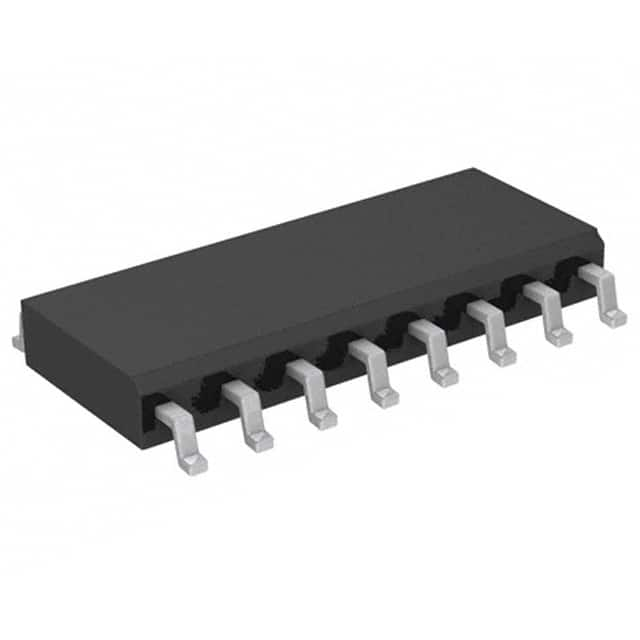NB4N507AD
Overview
- Category: Integrated Circuit
- Use: Signal Conditioning and Clock Generation
- Characteristics: High-speed, Low-power, Differential Input/Output
- Package: QFN (Quad Flat No-leads)
- Essence: A versatile signal conditioning and clock generation IC
- Packaging/Quantity: Tape and Reel, 2500 units per reel
Specifications and Parameters
- Supply Voltage: 2.5V to 3.3V
- Operating Temperature Range: -40°C to +85°C
- Input Frequency Range: DC to 2.5GHz
- Output Frequency Range: DC to 2.5GHz
- Input Impedance: 100Ω differential
- Output Impedance: 50Ω differential
- Power Consumption: 150mW typical
Pin Configuration
The NB4N507AD features a total of 32 pins arranged as follows:
- VDDA
- VSSA
- CLKIN_P
- CLKIN_N
- CLKOUT_P
- CLKOUT_N
- GND
- VDD
- REFCLK_P
- REFCLK_N
- RSTB
- OE
- SEL
- VDDO
- VSSO
- Q0_P
- Q0_N
- Q1_P
- Q1_N
- Q2_P
- Q2_N
- Q3_P
- Q3_N
- Q4_P
- Q4_N
- Q5_P
- Q5_N
- Q6_P
- Q6_N
- Q7_P
- Q7_N
- VDDQ
Functional Characteristics
The NB4N507AD offers the following functional characteristics:
- Differential clock input and output
- Clock multiplication and division
- Programmable output skew
- Output enable/disable control
- Reset functionality
- Low jitter and phase noise
Advantages and Disadvantages
Advantages: - High-speed operation - Low power consumption - Versatile functionality - Wide operating temperature range
Disadvantages: - Limited input/output voltage range - Requires external components for certain applications
Applicable Range of Products
The NB4N507AD is suitable for various applications, including:
- Data communication systems
- Networking equipment
- Test and measurement instruments
- Industrial automation
- Consumer electronics
Working Principles
The NB4N507AD operates by conditioning and generating clock signals. It accepts a differential clock input and provides multiple differential clock outputs with programmable features such as skew adjustment and frequency division/multiplication.
Detailed Application Field Plans
The NB4N507AD can be used in the following application fields:
- High-speed data transmission systems: Provides clock synchronization and signal conditioning for reliable data transfer.
- Network switches and routers: Enables precise clock generation and distribution for efficient network operation.
- Oscilloscopes and signal analyzers: Offers accurate clock signals for precise measurement and analysis.
- Factory automation systems: Facilitates synchronized operation of various equipment and devices.
- Digital audio/video equipment: Ensures stable clock signals for high-quality audio/video processing.
Detailed Alternative Models
Some alternative models to the NB4N507AD include:
- NB3N551
- NB7VQ1008
- NB6L11S
- NB4N855S
- NB3N2304
5 Common Technical Questions and Answers
Q: What is the maximum input frequency supported by the NB4N507AD? A: The NB4N507AD supports input frequencies up to 2.5GHz.
Q: Can the output skew be adjusted? A: Yes, the NB4N507AD allows for programmable output skew adjustment.
Q: What is the typical power consumption of the NB4N507AD? A: The NB4N507AD has a typical power consumption of 150mW.
Q: Is the NB4N507AD compatible with a wide range of supply voltages? A: The NB4N507AD operates within a supply voltage range of 2.5V to 3.3V.
Q: What package does the NB4N507AD come in? A: The NB4N507AD is available in a QFN (Quad Flat No-leads) package.
This encyclopedia entry provides an overview of the NB4N507AD integrated circuit, including its category, use, characteristics, package, specifications, pin configuration, functional characteristics, advantages and disadvantages, applicable range of products, working principles, detailed application field plans, alternative models, and


